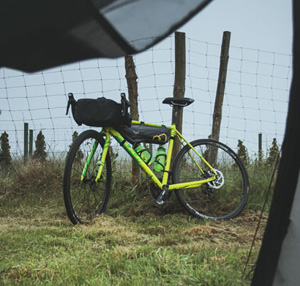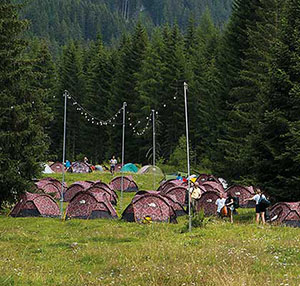A Tent Is For Life, Not Just A Festival

As the popularity of festivals rises year on year, it is becoming ever more important that festival goers consider their impact on the environment. Scenes of post-apocalyptic festival aftermath are all too familiar: abandoned tents and gazebos as far as the eye can see, a carpet of litter hiding any ground between.
Many of the tents left behind are perfectly fine to be used again, but the sad reality is that most will be discarded and end up in the landfill. While some festivals do try to salvage a number of tents to donate to charities, there is only so much a clear-up crew can do in the limited time they have.
In order to encourage you to love your tent and use it again (whatever state it is in at the end of the weekend) we have highlighted some common motives for leaving your tent behind and offered solutions and explanations as to why you should reconsider.
"My Tent Is Broken"
Firstly, the best way to avoid the broken tent scenario altogether is to invest in a quality tent that offers durability and strength and learn how to put it up properly, but we appreciate accidents do happen.
If your tent has been damaged during your festival you might deem it useless, but before you decide to leave it behind or throw it away ask yourself: is it repairable?
Tents can be quite simple to maintain and repair: the tents we sell come from reputable brands that offer spares and repairs to encourage you to re-use the same tent. For those who need a quick repair in the field, a tear in the fabric can be repaired with Tenacious Tape or an alternative tape with strong adhesive. Poles that have split can usually be repaired with duct tape or a splint until you get home, meaning you can have many more adventures without the added cost of a new tent.
"My Tent Leaks"
A summer festival wouldn’t be complete without the odd downpour of rain and you might just find that your tent doesn’t keep all the water out. This doesn’t mean you need to throw it away; it likely just needs a little attention.
It’s important to figure out where the water is coming from; is it condensation on the inside of the fabric, or is rainwater coming in at the seams? In the event of condensation, you’ll need to improve the airflow of the tent by opening any vents the tent might have. If it is the rain coming through the seams, you may need to spend a little time sealing them with some tent seam silicone sealant or replenishing the durable water repellent (DWR) finish with some Grangers; this is inexpensive and relatively easy to do compared with the cost of buying a whole new tent that could leave you with the same issue.
By investing a little more in a quality tent that boasts features such as a flysheet with quality DWR, a separate inner tent, and plenty of ventilation you’ll reduce the chances of having any issues and you’ll want to take it home to use over and over again.
"My Friend Had A Better Tent,
I’m Getting One Of Those For Next Time"
You’ll see a huge array of tents at festivals, all with different shapes, sizes, and styles. If you do see one with extra features that suit you better than the one you have, then sure - buy it, but it wouldn’t be wise to leave your existing tent behind. If you get home and find that the tent you want is unavailable, you’ll need your existing tent for any impromptu adventures in the meantime.
If you do manage to get hold of your new tent, you can sell the existing one on to someone else to help with the cost of the new tent. Better for your wallet as well as the environment!
If you know you don’t like your tent but you haven’t quite found the right one yet, our tent buying guide might help you find what you are looking for.
"I’m Never Camping Again"
If camping hasn’t quite lived up to your expectations and you firmly believe you’ll never use your tent again, that’s fine - it’s not for everyone. But leaving your tent to be put into landfill is not so fine and not at all sustainable. Many tents are made with plastic, so the more it is used before it gets thrown away, the better.
The best alternative is to pack it up and pass it on to someone who will use it again. Many festivals have charity points on site that you can donate to come Monday morning. If you aren’t aware of any at your festival, pack it up and take it home to your local charity shop.
"I Just Don’t Want To Carry It Back"
This is a key attitude that needs adjusting. Not only is it an expensive way of thinking in terms of your wallet but it has a huge cost to the environment that can easily, and absolutely, be avoided with a little more action and effort no matter how tired you are.
There are alternative ways to transport your festival kit from car to camp and back, a sack truck with large pneumatic wheels will allow you to load up your kit and roll it back, while this still requires effort it can be a little more convenient and comfortable than a large rucksack and it is easier to share the load with your camp mates. Alternatively, some festivals offer a number of pre-erected tents for an additional fee. This means you won’t have to carry or put up a tent at all, you just have to arrive and relax, but where’s the fun in that?
![]()
 |
About the Author:Charlotte Fish - Outdoor ExpertCharlotte discovered her passion for the outdoors in her early teens and has never looked back since. Her pursuit of outdoor activities has taken her all over the world but she truly believes there is no place like home. |









